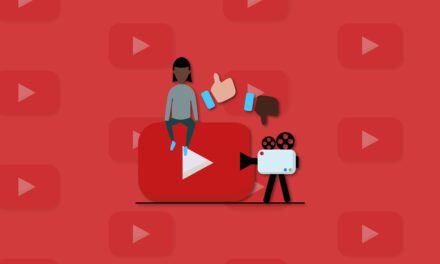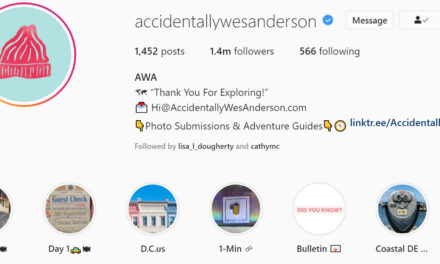All day long, every person with access to the web is generating a trail of data that has been a boon to businesses and marketers. According to Robert Boeri-an independent consultant in the Washington, D.C., metro area-pinpointing an exact definition for this Big Data can be tricky. “The definition is somewhat subjective, and it can vary by sector depending on what kinds of software tools are available,” explains Boeri.
A recent article by the MIT Technology Review notes that if you were to ask any CTO to provide a definition of Big Data, that person “will stare at the floor. Chances are you will get as many definitions as the number of people you ask.” Regardless of how one defines it, it’s pretty clear that Big Data “offers unprecedented insight, improved decision making, and untapped sources of profit,” according to the same MIT article.
So what is it? “Until recently we only had x number of data-your email, your webpages, maybe some social media-that kind of stuff,” explains Oleg Rogynskyy, CEO and founder of Semantria, a cloud-based text and sentiment analysis solution provider launched in 2011. “But these days more things generate more and more data. I’m talking about things like an intelligent thermostat, for example. With Big Data, your Twitter account generates data, and your car generates data, and your iPhone generates data.”
The proliferation of Big Data enables companies to harness the power of predictive analysis, notes Rogynskyy. He says, “When we had ‘little data’ we didn’t have much data to look at for correlations; now, with Big Data, we have so much more data in parallel that we can find these correlations.”
THE YEAR IN REVIEW
Seth Redmore, VP of product management at Lexalytics, says the biggest trend of the year was what he likes to call “breaking down the walls.” He explains, “Knowledge and data is power, and historically there’s been a lot of siloed data; and so you have Group A jealously controlling all the customer satisfaction data, and Group B jealously controls all the manufacturing data, and Group C controls all the social data.”
“Well, if you want to answer a question like, ‘I’m seeing buzz on social media about my product having a problem,’ you need to be able to tell, is it a marketing perception problem? Is it a customer support problem? Or, is it an actual product manufacturing kind of problem?” adds Redmore.
To answer those questions, a company would need to get data from engineering, support, manufacturing, and social media in the same system, he notes. “So what we are seeing is a business value that people are putting folks in charge of the initiatives to get these data warehouses together so that you can ask these sort of coherent cross-business questions of it,” says Redmore.
“The more streams of data you put on a timeline next to each other, the better your chances are of finding correlations there; so breaking down silos is standardizing datasets so that they can be easily ingested by these machines that crunch them,” Rogynskyy explains.
He also notes that companies such as Semantria spent 2013 trying to teach machines context. For example, he says, if you were to say, “My windows just crashed,” a machine would not have any way of knowing which kind of windows you’re talking about-the ones in your house or the operating system on your laptop. Companies are now trying to teach machines about context to make it possible for them to better understand all of that Big Data.
A LOOK AHEAD
This year, Redmore says that voice technology will be a bigger component of the Big Data picture. “You’ll get much broader use from some of this voice technology, and you’ll get much broader use of video monitoring technology,” notes Redmore. “For example … take a video of a frat party-are more women holding Bud Lights than are holding Sam Adams? Or are men holding them? Are they drinking Coke? That sort of analysis is interesting for brand makers, and that sort of video analysis is going to become easier and more common.”
In 2014, Rogynskyy sees “more context, more firepower, more data. … I think Big Data is kind of becoming closer to kind of being human.” He elaborated by noting Apple’s Siri, for example, will soon be able to understand things on a more complex level. “Right now, when you tell the machine, ‘Siri, I want Coke,’ it will not know [but] soon it will know what Coke you meant; in the next years, I see Siri asking, ‘Did you mean the drug or the drink?'”
Rogynskyy also feels sentiment analysis will play a big role in 2014 and beyond. “Companies like ours will be able to tell whether a post is angry, kind, disappointed; we will be able to detect emotions and tell whether the post is positive or negative,” he says.
Semantria works with Yankee Candle, for example, which is monitoring the internet for mentions of smells. “Yankee Candle is looking for smells and their correlations to time of the year, emotions, feeling, color; anything that they can throw in their marketing mix so they come up with new scents,” he adds. “So a tweet like, ‘I just smelled cinnamon and it made me think of Christmas'” would certainly draw the attention of Yankee Candle. Rogynskyy says there will be “huge progress” with respect to sentiment analysis in 2014.
As 2014 unfolds, there is no question that the amount of Big Data will keep growing on a daily basis; there is also no question that companies and marketers will keep looking for ways to profit from (and make sense of) the bevy of information that is now at their disposal. And, in the end, this is all a big benefit to the consumer.







